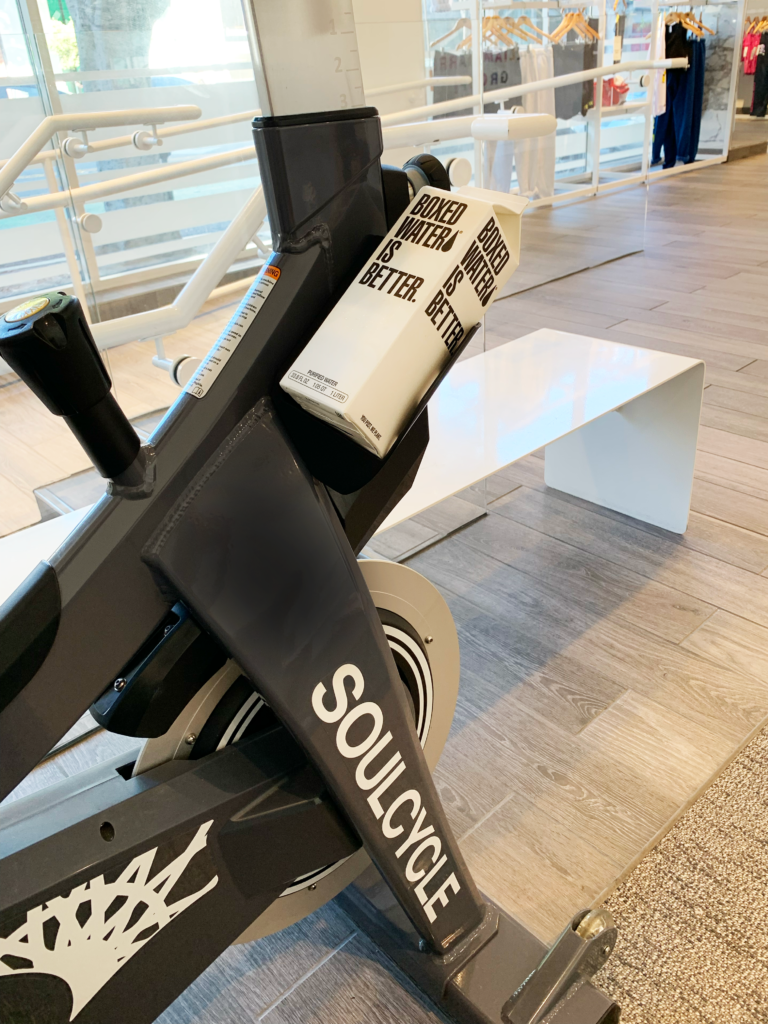
Looking to strengthen and tone your shoulders? Look no further! “Effective Shoulder Workout for the Gym” is here to help you achieve your fitness goals. This innovative product provides you with a comprehensive shoulder workout routine that is specifically designed for the gym. With easy-to-follow exercises and expert guidance, you’ll be on your way to sculpted and defined shoulders in no time. Say goodbye to flabby arms and hello to a more confident you with the “Effective Shoulder Workout for the Gym”!

Warm-up exercises
Before jumping into your shoulder workout, it’s crucial to warm up your muscles and prepare your body for the upcoming exercises. Warm-ups help increase blood flow to the muscles, improve flexibility, and reduce the risk of injury. Here are a few warm-up exercises that you can incorporate into your routine:
Jumping jacks
Jumping jacks are a classic warm-up exercise that not only gets your heart rate up but also engages your shoulder muscles. Start by standing with your feet together and arms by your sides. Jump up and spread your legs while simultaneously raising your arms above your head. Jump back to the starting position and repeat for a set of 10-15 repetitions.
Arm circles
Arm circles are an excellent warm-up exercise for your shoulder joints and muscles. Stand with your feet hip-width apart and extend your arms straight out to the sides. Make small circles with your arms, gradually increasing the size of the circles. After 10-15 seconds, switch directions and continue for another 10-15 seconds.
Shoulder rolls
Shoulder rolls help loosen up your shoulders and improve mobility. Stand with your feet shoulder-width apart and relax your arms by your sides. Lift your shoulders up towards your ears, roll them back, and then down. Repeat this motion for 10-15 seconds, and then switch directions.
Arm swings
Arm swings are a dynamic warm-up exercise that helps increase the range of motion in your shoulders. Stand with your feet shoulder-width apart and extend your arms out to the sides. Swing your arms forward in a circular motion, gradually increasing the speed and range of the swings. After 10-15 seconds, swing your arms backward in the same circular motion.
By incorporating these warm-up exercises into your shoulder workout routine, you’ll be able to prepare your muscles, increase flexibility, and reduce the risk of injury.
Compound exercises
Compound exercises are an efficient way to target multiple muscle groups in your shoulders while also engaging other muscles in your body. These exercises involve movement at multiple joints and often require the use of free weights or resistance machines. Here are some compound exercises that you can incorporate into your shoulder workout:
Overhead press
The overhead press is a classic compound exercise that primarily targets the deltoid muscles in your shoulders. To perform the overhead press, start by standing or sitting with a dumbbell in each hand. Raise the dumbbells to shoulder height, palms facing forward. Press the dumbbells overhead until your arms are fully extended. Lower the dumbbells back to shoulder height and repeat for a set of 8-12 repetitions.
Push press
The push press is a compound exercise that combines a slight leg drive with an overhead press. This exercise not only targets the shoulders but also engages the legs, core, and triceps. Start by holding a barbell or dumbbells at shoulder level, palms facing forward. Bend your knees slightly, then explosively drive through your legs to help propel the weight overhead. Finish in the same position as the overhead press and repeat for a set of 8-12 repetitions.
Arnold press
Named after the legendary bodybuilder and actor Arnold Schwarzenegger, the Arnold press is a compound exercise that adds more variety to your shoulder workout. Start by holding a dumbbell in each hand at shoulder height, palms facing towards your body. As you press the dumbbells overhead, rotate your palms outward. Lower the dumbbells back to shoulder height while rotating your palms back towards your body. Repeat for a set of 8-12 repetitions.
Military press
The military press, also known as the strict press, is another compound exercise that targets your shoulder muscles. Start by holding a barbell or dumbbells at shoulder level, palms facing forward. Press the weight overhead until your arms are fully extended. Lower the weight back down to shoulder height and repeat for a set of 8-12 repetitions.
Upright rows
Upright rows primarily target the deltoid muscles in your shoulders, as well as the trapezius and biceps. Start by standing with your feet shoulder-width apart and holding a barbell or dumbbells in front of your thighs, palms facing your body. Keep your elbows pointed out to the sides and lift the weight straight up towards your chin. Lower the weight back down to the starting position and repeat for a set of 8-12 repetitions.
Incorporating compound exercises into your shoulder workout routine allows you to target multiple muscle groups effectively and efficiently.

Isolation exercises
Isolation exercises are designed to target specific muscles in your shoulders and allow you to focus on building strength and definition in those areas. These exercises typically involve smaller movements and use lighter weights or resistance bands. Here are some isolation exercises that you can incorporate into your shoulder workout:
Front raises
Front raises specifically target the anterior deltoid muscle in the front of your shoulders. Start by standing with your feet shoulder-width apart and holding a dumbbell in each hand, palms facing your body. Raise the dumbbells directly in front of you, keeping your arms straight. Once your arms are parallel to the floor, slowly lower the dumbbells back down to your thighs. Repeat for a set of 10-15 repetitions.
Lateral raises
Lateral raises primarily target the lateral deltoid muscles on the sides of your shoulders. Start by standing with your feet shoulder-width apart and holding a dumbbell in each hand, palms facing your body. Raise the dumbbells out to the sides, keeping your arms straight and slightly bent at the elbows. Once your arms are parallel to the floor, slowly lower the dumbbells back down to your thighs. Repeat for a set of 10-15 repetitions.
Rear delt flyes
Rear delt flyes focus on the posterior deltoid muscles in the back of your shoulders. Start by standing with your feet shoulder-width apart and holding a dumbbell in each hand, palms facing each other. Hinge forward at the hips, keeping your back straight and arms hanging down towards the floor. Raise the dumbbells out to the sides, squeezing your shoulder blades together as you do so. Lower the dumbbells back down to the starting position and repeat for a set of 10-15 repetitions.
Face pulls
Face pulls target the rear delts, as well as the muscles in your upper back. Start by attaching a resistance band or cable to a stationary object at chest level. Hold the band or cable with both hands, palms facing down. Stand with your feet shoulder-width apart and take a few steps back to create tension in the band or cable. Pull the band or cable towards your face, leading with your elbows. Squeeze your shoulder blades together at the end of the movement. Slowly release the tension and repeat for a set of 10-15 repetitions.
Shrugs
Shrugs primarily target the trapezius muscles in your upper back, but they also engage the shoulders. Start by holding a dumbbell in each hand at your sides, palms facing your body. Lift your shoulders up towards your ears in a controlled manner. Hold for a brief moment at the top and then lower your shoulders back down. Repeat for a set of 10-15 repetitions.
By incorporating these isolation exercises into your shoulder workout routine, you can target specific muscles and enhance the strength and definition in your shoulders.
Superset exercises
Superset exercises involve performing two exercises back-to-back without any rest in between. This training technique helps increase the intensity of your workout and challenges your muscles in different ways. Here are some superset exercises that you can do to add variety and efficiency to your shoulder workout:
Shoulder press combined with lateral raises
This superset combines the shoulder press, which targets the entire shoulder, with lateral raises, which primarily target the side deltoids. Start by performing a set of shoulder presses using either dumbbells or a barbell. Immediately follow it up with a set of lateral raises using dumbbells. Rest for a brief moment and repeat the superset for a total of 3 sets.
Upright rows combined with rear delt flyes
This superset combines upright rows, which target the shoulders and trapezius muscles, with rear delt flyes, which focus on the rear delts. Start by performing a set of upright rows using a barbell or dumbbells. Immediately follow it up with a set of rear delt flyes using dumbbells. Rest for a brief moment and repeat the superset for a total of 3 sets.
Arnold press combined with shrugs
This superset combines the Arnold press, which targets the shoulders from different angles, with shrugs, which primarily target the trapezius muscles. Start by performing a set of Arnold presses using dumbbells. Immediately follow it up with a set of shrugs using dumbbells. Rest for a brief moment and repeat the superset for a total of 3 sets.
Push press combined with face pulls
This superset combines the push press, which targets the shoulders and other muscle groups, with face pulls, which target the rear delts and upper back. Start by performing a set of push presses using a barbell or dumbbells. Immediately follow it up with a set of face pulls using a resistance band or cable. Rest for a brief moment and repeat the superset for a total of 3 sets.
Overhead press combined with front raises
This superset combines the overhead press, which targets the whole shoulder, with front raises, which primarily target the front deltoids. Start by performing a set of overhead presses using either dumbbells or a barbell. Immediately follow it up with a set of front raises using dumbbells. Rest for a brief moment and repeat the superset for a total of 3 sets.
By incorporating these superset exercises into your shoulder workout routine, you can maximize your time at the gym and challenge your muscles in new ways.

Volume training
Volume training involves performing a higher number of sets and repetitions to increase muscle size and strength. By incorporating volume training into your shoulder workouts, you can push your limits and stimulate muscle growth. Here are some volume training guidelines for compound and isolation exercises:
3 sets of 8-12 reps for compound exercises
For compound exercises such as overhead press, push press, Arnold press, military press, and upright rows, aim to perform 3 sets of 8-12 repetitions. Choose a weight that challenges you but allows you to maintain proper form throughout each set. Focus on controlled movements and avoid using momentum to lift the weights.
3 sets of 10-15 reps for isolation exercises
For isolation exercises such as front raises, lateral raises, rear delt flyes, face pulls, and shrugs, aim to perform 3 sets of 10-15 repetitions. Again, choose a weight that is challenging but manageable. Concentrate on contracting the targeted muscles and maintaining proper form throughout each set.
Short rest periods (30-60 seconds) between sets
To increase the intensity of your shoulder workout and promote muscle endurance, keep your rest periods between sets relatively short, ideally between 30-60 seconds. This will keep your heart rate elevated and ensure that your muscles are continuously engaged. However, if you’re lifting heavy weights, you may need slightly longer rest periods to allow for adequate recovery.
By incorporating volume training principles into your shoulder workout routine, you can promote muscle growth, improve endurance, and see significant progress over time.
Progressive overload
Progressive overload is a fundamental principle in strength training that involves gradually increasing the demands placed on your muscles to stimulate growth and improve performance. By consistently challenging your shoulders with more weight, repetitions, or sets, you can continue to make progress and prevent plateaus. Here are some strategies for implementing progressive overload in your shoulder workouts:
Gradually increase the weight lifted
As your muscles adapt to a certain weight, it’s essential to gradually increase the weight to continue challenging them. For compound exercises like overhead press or push press, aim to increase the weight by 5-10% once you can comfortably perform 12 repetitions with proper form. For isolation exercises like front raises or lateral raises, aim to increase the weight by 2-5% once you can comfortably perform 15 repetitions.
Increase reps or sets over time
Another way to implement progressive overload is by increasing the number of repetitions or sets you perform. As your muscles become stronger and more conditioned, you can gradually increase the number of repetitions within your target rep range. Once you can perform the maximum number of repetitions with ease, consider adding an additional set to further challenge your muscles.
Use resistance bands or chains for added challenge
Incorporating resistance bands or chains into your shoulder workouts can also provide an additional challenge and stimulate muscle growth. These tools add variable resistance throughout the range of motion, making the exercises more difficult at the peak contraction point. Experiment with different resistance bands or chains to find the level of resistance that challenges you while still allowing you to maintain proper form.
By implementing progressive overload techniques into your shoulder workouts, you can ensure that you’re continually challenging your muscles and making progress towards your strength and fitness goals.
Proper form and technique
Maintaining proper form and technique during your shoulder workouts is essential to maximize the effectiveness of each exercise and reduce the risk of injury. Here are some key tips to keep in mind:
Maintain a neutral spine
When performing any shoulder exercise, it’s crucial to maintain a neutral spine alignment. Keep your head in line with your spine, and avoid excessive arching or rounding of the back. Engaging your core muscles can help stabilize your spine and promote proper form.
Engage core and glutes for stability
Engaging your core and glute muscles during shoulder exercises can not only help stabilize your spine but also improve overall posture and form. Before starting each exercise, take a moment to brace your core and squeeze your glutes. This will create a solid foundation and enhance stability throughout the movement.
Avoid using momentum to lift weights
It’s essential to control the weight throughout the entire range of motion and avoid using momentum to lift the weights. By using controlled movements, you can maximize muscle activation and minimize the risk of injury. If you find yourself relying on momentum, consider decreasing the weight or adjusting your technique to ensure proper form.
By maintaining proper form and technique throughout your shoulder workouts, you can target the right muscles, reduce the risk of injury, and achieve optimal results.
Frequency and recovery
The frequency at which you train your shoulders and the amount of rest you allow between workouts play a crucial role in muscle growth and recovery. Here are some guidelines to follow:
Train shoulders 2-3 times per week
To ensure adequate stimulation and growth, aim to train your shoulders 2-3 times per week. This frequency allows you to target the muscle groups effectively while allowing for sufficient recovery between workouts. Be mindful of balancing your shoulder workouts with workouts for other muscle groups to avoid overtraining and promote overall strength and balance.
Allow 48-72 hours of rest between workouts
To promote muscle recovery and repair, it’s important to allow 48-72 hours of rest between shoulder workouts. This rest period gives your muscles time to repair the micro-tears that occur during exercise and adapt to the training stimulus. Be sure to listen to your body and adjust your training frequency if you’re feeling excessively sore or fatigued.
Include stretching and foam rolling for recovery
In addition to rest, incorporating stretching and foam rolling into your routine can help promote recovery and prevent muscle imbalances. After each shoulder workout, spend a few minutes stretching the muscles and performing exercises that target flexibility and mobility. Using a foam roller on the upper back and shoulders can also help release tension and promote blood flow to the muscles.
By following these guidelines for frequency and recovery, you can optimize your shoulder workouts and ensure that your muscles have the time they need to recover and grow.
Safety precautions
When performing shoulder exercises, it’s crucial to prioritize safety to prevent injuries. Here are some safety precautions to keep in mind:
Start with lighter weights to master technique
If you’re a beginner or new to shoulder exercises, start with lighter weights to focus on mastering proper technique. This will help you develop a solid foundation and reduce the risk of injury as you progress to heavier weights. Only increase the weight once you can perform the exercise with proper form and control.
Gradually increase intensity to avoid injury
As mentioned earlier, progressive overload is essential for muscle growth and strength gains. However, it’s important to gradually increase the intensity to avoid overstressing your muscles or joints. Listen to your body and give yourself time to adapt to new weights or exercises before pushing to the next level.
Listen to your body and stop if experiencing pain
It’s normal to experience muscle fatigue or discomfort during your workouts, but it’s crucial to differentiate between discomfort and pain. If you experience sharp or persistent pain during a shoulder exercise, stop immediately and seek medical attention if needed. Pain is a sign that something may be wrong, and continuing to exercise through it can lead to further injury or damage.
By prioritizing safety and mindful training, you can minimize the risk of injuries and maintain a safe and effective shoulder workout routine.
Conclusion
Incorporating a comprehensive shoulder workout into your gym routine is an excellent way to strengthen and sculpt your shoulders while improving overall upper body strength. By starting with warm-up exercises to prepare your muscles, progressing to compound and isolation exercises to target specific muscles, incorporating superset exercises and volume training for variety and intensity, implementing progressive overload to continue making progress, maintaining proper form and technique, and allowing for adequate recovery and rest, you can achieve your desired shoulder strength and aesthetic goals. Remember to prioritize safety, listen to your body, and consult with a fitness professional if you have any concerns or questions. With dedication, consistency, and the right approach, you can develop strong, defined shoulders that will enhance your overall physique and performance.
